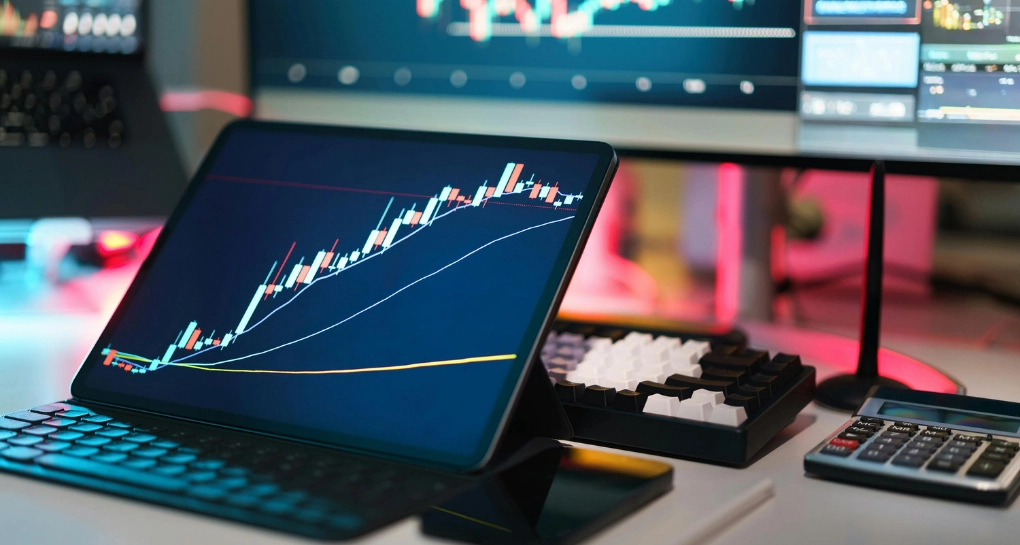Forex may look complex at first glance, but its foundation rests on three simple building blocks: pips, lots, and leverage. Mastering these concepts is essential for every trader — they define how trades are measured, sized, and managed.
This guide explains each concept in beginner-friendly terms, shows how they work together, and highlights how traders use them inside their strategies.
What Are Pips in Forex Trading?
What Is a Pip?
A pip (short for “percentage in point”) is the smallest unit of price movement in forex trading. For most currency pairs, a pip equals 0.0001.
- Example: If EUR/USD moves from 1.1000 to 1.1001, that’s one pip.
- Exception: Japanese Yen pairs are quoted to two decimals (e.g., USD/JPY 140.00 → 140.01 = one pip).
Understanding Pips
Pips make it easy to describe market moves. Instead of saying “EUR/USD rose by 0.0001,” traders simply say “it rose by one pip.”
Fast Fact
On a standard lot of EUR/USD, one pip is typically worth about $10.
Calculating Pip Value
The formula is:
Pip Value = (One Pip ÷ Exchange Rate) × Lot Size
Example: Trading one standard lot (100,000 units) of EUR/USD at 1.1000:
(0.0001 ÷ 1.1000) × 100,000 ≈ $9.09 per pip
Pip values vary depending on:
- The currency pair
- The lot size (standard, mini, micro)
- The account’s base currency
You can calculate pip values instantly using the FXPrimus trading platform.
Pips and Profitability
Every forex profit or loss comes down to pip movement.
- A 50-pip rise in EUR/USD on a standard lot ≈ $500 gain.
- A 50-pip drop ≈ $500 loss.
This makes pip knowledge vital for risk management.
Real-World Examples of Pips
- EUR/USD: 1.1050 → 1.1060 = 10 pips
- GBP/USD: 1.2500 → 1.2485 = 15 pips
- USD/JPY: 140.25 → 140.55 = 30 pips
Pip vs. Pipette
Some platforms show a fifth decimal place (or third for JPY pairs). That extra digit is a pipette = one-tenth of a pip.
- Example: EUR/USD 1.10005 → 1.10015 = 1 pip (10 pipettes).
How Are Pips Used?
- Measuring price changes
- Calculating spreads (trading costs)
- Determining profits and losses
- Comparing volatility between pairs
Understanding Forex Lots
What Is a Lot?
A lot defines the trade size — how much currency you’re buying or selling.
Types of Lots
- Standard Lot – 100,000 units (≈ $10 per pip)
- Mini Lot – 10,000 units (≈ $1 per pip)
- Micro Lot – 1,000 units (≈ $0.10 per pip)
- Nano Lot – 100 units (≈ $0.01 per pip, not always offered)
How Do I Calculate Profit and Loss?
Profit/Loss = Number of Pips × Pip Value × Number of Lots
Example:
- Trade size: 1 mini lot (10,000 units)
- Pip value: ≈ $1
- Market move: +25 pips
- Profit = 25 × $1 = $25
Demystifying Leverage in Forex
How Leverage Works
Leverage lets traders control larger positions with smaller capital.
- Example: 1:100 leverage = $1,000 margin controls $100,000 worth of currency.
Impact of Leverage on Profits and Losses
- $1,000 capital at 1:100 leverage = $100,000 buying power
- A 10-pip move on a standard lot = ≈ $100 gain or loss
Leverage magnifies both outcomes — positive and negative.
How Does Leverage Affect Pip Value?
Leverage does not change the pip value. It changes the exposure you can take, which increases the impact of pip movements.
What Happens When a Trader Increases Leverage?
- Potential for higher profits on small price changes
- Increased risk of margin calls if the market moves unfavorably
On FXPrimus platforms, traders can adjust leverage settings to suit their risk tolerance and trading style.
Advanced Use of Pips, Lots, and Leverage
- With Technical Analysis: Set pip-based targets alongside chart patterns.
- With Fundamental Analysis: Link pip movements to news events or economic data.
- With Risk Management: Always calculate pip values before setting stop-loss and take-profit orders.
Tools for Monitoring Pips, Lots, and Leverage
- Trading platforms (MT4 & MT5): FXPrimus integrates pip, lot, and leverage calculators directly.
- Risk management tools: Use stop-loss, margin calculators, and volatility indicators.
Common Mistakes Traders Make
- Miscalculating pip values across pairs
- Over-leveraging positions beyond account safety
- Ignoring lot size in risk planning
- Forgetting spreads (in pips) are trading costs
Conclusion
Pips, lots, and leverage may sound technical, but they are the foundation of forex trading. Pips measure price movement, lots define trade size, and leverage determines exposure. Together, they shape every trade’s risk and reward.
By mastering these basics, traders can better understand the market, calculate positions accurately, and approach forex with confidence.
Start Trading Smarter with FXPrimus
Ready to put these concepts into practice? FXPrimus offers competitive spreads, flexible lot sizes, and customizable leverage in a secure trading environment. Whether you start with a demo account or go live, the tools are designed to support your growth.
Open a Live Account with FXPrimus or explore a demo account today.
